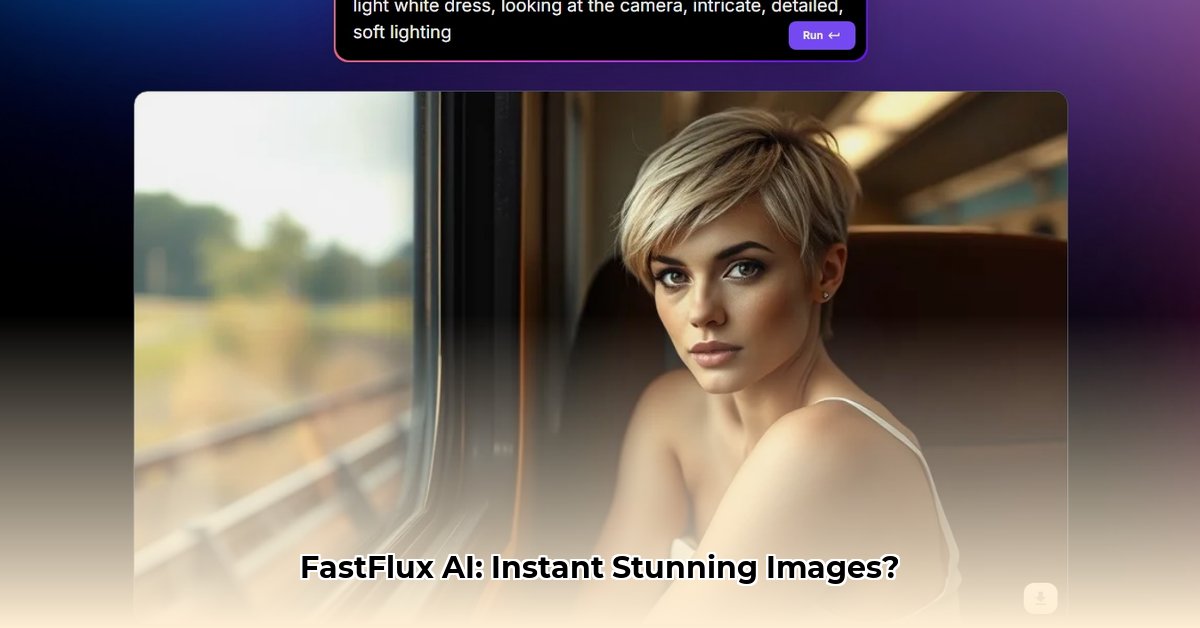
FastFlux AI: A Deep Dive into Free AI Image Generation
FastFlux AI bursts onto the scene promising instant, free AI image generation. But is this revolutionary speed and accessibility too good to be true? This review dissects FastFlux AI's capabilities, limitations, and competitive standing within the rapidly evolving landscape of AI image creation. We'll explore the user experience, assess image quality, and analyze the platform's long-term sustainability, ultimately helping you determine if FastFlux AI is the right tool for your needs.
Speed and Simplicity: The Core FastFlux AI Proposition
FastFlux AI's primary strength lies in its unparalleled speed. Image generation is almost instantaneous, a stark contrast to many competitors. Its user-friendliness is equally impressive; no account registration is required, allowing for immediate image creation. This streamlined approach is undeniably appealing, particularly for users seeking quick image generation. It's akin to having a powerful, AI-powered photo booth at your fingertips. However, this simplicity might indicate compromises in other areas. While speed is a significant advantage, it could mean limitations in advanced editing tools or the generation of highly detailed images. This is certainly a trade-off worth considering.
The Free Model: A Sustainable Strategy?
Unlimited free image generation is a powerful incentive for users. Yet, this raises crucial questions about the platform's long-term viability. The pricing details for any potential paid version remain unclear, with conflicting reports suggesting costs ranging from $1 for 1600 images to $1 for 500. This lack of transparency makes it difficult to evaluate the trade-offs associated with the free tier. Are we sacrificing image quality, resolution, or creative control in exchange for free access? Time, and the release of more concrete pricing information, will tell.
The Missing Details: Transparency and Trust
A surprising lack of transparency surrounds FastFlux AI's underlying technology. Details about the AI models used, the training data employed, and the precise limitations of the free version remain scarce. This lack of information hinders a complete assessment of the platform's capabilities and future prospects. Understanding the technical underpinnings is crucial for evaluating its potential and limitations. Without this knowledge, we can only speculate on its ability to compete long-term against entrenched players.
Image Quality: A Subjective Assessment
Initial user reports describe the generated images as "beautiful," but the inherent subjectivity of beauty complicates objective evaluation. The absence of quantitative metrics—such as Fréchet Inception Distance (FID) or Inception Score (IS), commonly used to assess AI image generation—prevents a precise comparison with other platforms. Further testing and independent evaluations are essential for a more robust assessment of FastFlux AI's visual output. Is the speed worth compromising the visual fidelity of those images? Only independent review can confirm.
Competitive Landscape: A Dynamic Market
FastFlux AI’s free and high-speed generation significantly differentiates it within the AI image generation market. However, its long-term competitiveness against established platforms offering more features and defined pricing models remains uncertain. The free model might be a short-term strategic approach, with long-term viability dependent on other aspects of the business model. Will it be able to maintain this niche?
Actionable Intelligence: A Strategic Outlook
The following table summarizes potential short-term and long-term implications for key stakeholders:
| Stakeholder | Short-Term Goals (0-1 Year) | Long-Term Goals (3-5 Years) |
|---|---|---|
| FastFlux AI | Enhance transparency; establish quality benchmarks; gather user feedback. | Develop premium features; explore diverse revenue streams; expand into new application areas. |
| Competitors | Monitor FastFlux AI's progress; adjust pricing and feature offerings. | Offer more competitive free tiers or specialize in high-value niche services. |
| Users | Experiment with FastFlux AI; compare it to other tools. | Evaluate continued value proposition; consider paid upgrades if necessary. |
Risk Assessment Matrix: Identifying and Mitigating Challenges
This table outlines potential risks and proposed mitigation strategies:
| Risk Category | Probability | Impact | Mitigation Strategy |
|---|---|---|---|
| Lack of Model Transparency | High | High | Publicly disclose model architecture, training data, and limitations. |
| Reliance on Free Model | High | Medium | Diversify revenue streams (APIs, premium features). |
| Market Saturation | Medium | High | Focus on specific niche applications or unique features. |
| Unverified Image Quality Claims | Medium | Medium | Conduct independent quality assessments; solicit extensive user feedback. |
The Verdict: A Promising but Uncertain Future
FastFlux AI presents a disruptive approach to free AI image generation, offering unmatched speed and ease of use. However, concerns remain regarding transparency and the long-term sustainability of its free model. While experimentation is encouraged, users should manage their expectations. The platform's success hinges on addressing these uncertainties and providing more detailed information about its technology and future plans. Further independent testing and analysis are warranted to provide a more definitive picture of its strengths and weaknesses. The future of FastFlux AI is currently—quite literally—a rapidly developing image.